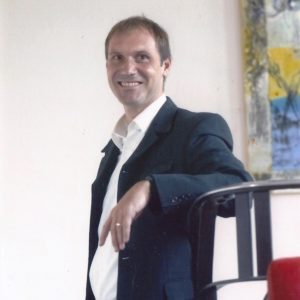
Materials scientist Jens Kreisel and his FNR-PEARL group provide the basis for developing “smart” materials that could revolutionise many technologies.
As Jens Kreisel walks from the parking lot to his office, he passes through the long corridors of the Luxembourg Institute of Science and Technology (LIST). To the left and right are great big windows inviting one to look into the brightly lit laboratories filled with gleaming pieces of complex equipment. Jens Kreisel, the director of the Materials Research and Technology department of LIST and adjunct professor at the University of Luxembourg, is surrounded by high technology, which he requires for his research.
Mechanical pressure turns into electric voltage
For Jens Kreisel, everything revolves around “smart materials”. His most fondly used technical term is “multiferroic”. In essence, some materials are so smart – or intelligent – that they can tune a certain property when another property is actively modified by an external stimulus.
These smart materials can transform energy. As an example: exerting mechanical pressure on special crystals will cause them to create an electric voltage. This is known as the piezoelectric effect, and is used in many applications from simple cigarette lighters to various modern sensors in cars.
Pressure on a piezoelectric sensor deforms it ever so slightly. The arrangement of atoms in the crystal shifts and the degree of deformation can be measured from the resulting electric voltage. This is how many airbag triggers or passenger detection work.
The elephant in high heels
Yet, Jens Kreisel’s focus is not on known airbags and cigarette lighters. The non-smoker by conviction understands the world of “smart” crystals like hardly any other. He and his team want to understand smart properties in detail and are continually on the hunt for new materials with new interactions.
Using the latest available methods, the researchers are studying the atomic makeup of these crystals. Kreisel is a world leader in the study of materials under extreme conditions such as high pressures or temperatures. Kreisel will clamp a crystal, for example, in a diamond press that generates a hundred times the pressure a grown elephant in high heels would exert if it were to put all its weight on one stiletto-heeled shoe.
At the same time, he will fire a laser beam at the crystal. By conducting such experiments, the research team is continually discovering material properties that could be of great use in a large variety of technical applications.
Smart coatings on glass surfaces
Kreisel’s team are all about the application as well. Soon it should be possible to apply smart materials like those Kreisel researches onto glass surfaces as ultra-thin coatings. The resulting smart surfaces would then respond selectively to pressure, for example. Kreisel and his staff are already applying such coatings onto glass surfaces using highly specialised printers in the LIST labs.
Industry is looking over the shoulder with interest
It is little wonder that Kreisel’s team are highly successful at attracting third-party funding, in acquiring research funds from independent institutions or partners in industry. Their research provides the basis for products that industry wants to put into application and, with it, make money. Kreisel is obviously very comfortable with being a driving force for the scientific location of Luxembourg.
This success story originates from the FNR 2017 Annual Report – view the Annual Report as PDF or interactive digital version
PEARL – Attracting established leading researchers in strategically relevant areas for Luxembourg research
FNR CALL: 2012
DOMAIN: MS – Materials, Physics and Engineering
FNR COMMITTED: 5,000,000 EUR
PERIOD: 01.01.2014 – 31.12.2018




